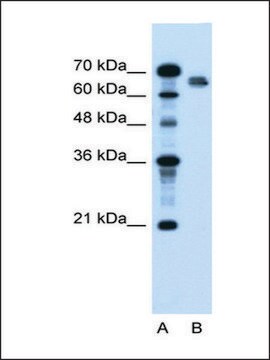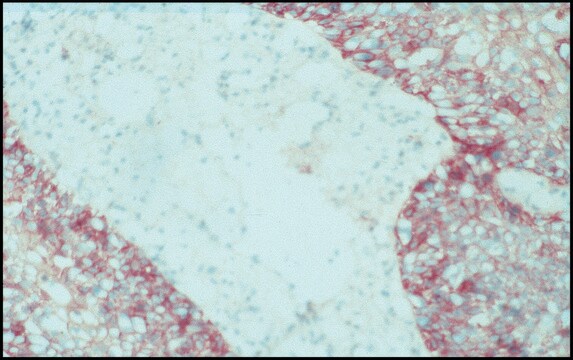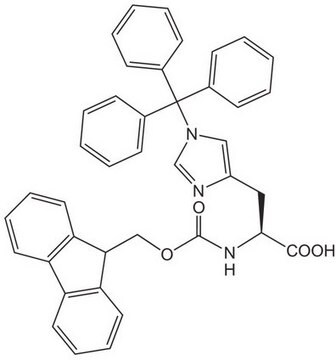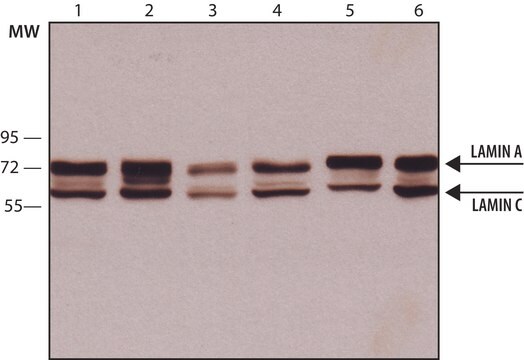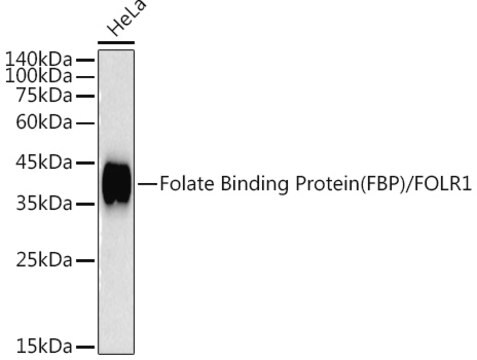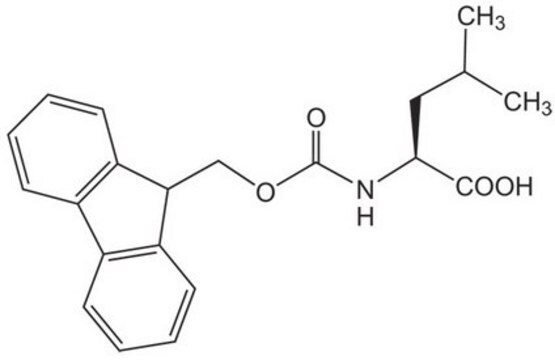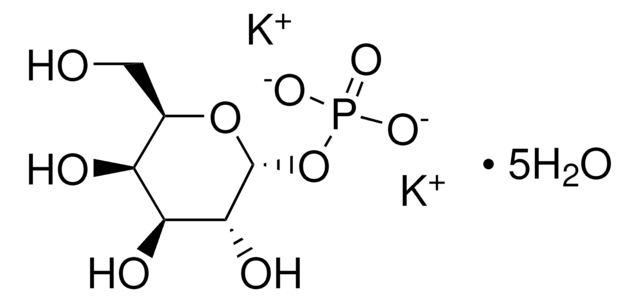AV54287
Anti-ERCC5 antibody produced in rabbit
affinity isolated antibody
别名:
Anti-COFS3, Anti-ERCM2, Anti-Excision repair cross-complementing rodent repair deficiency, group 5, Anti-UVDR, Anti-XPG, Anti-XPGC
登录查看公司和协议定价
所有图片(1)
About This Item
分類程式碼代碼:
12352203
NACRES:
NA.41
共軛:
unconjugated
application:
WB
無性繁殖:
polyclonal
物種活性:
mouse, human, rabbit, rat
citations:
6
技術:
western blot: suitable
推荐产品
生物源
rabbit
品質等級
共軛
unconjugated
抗體表格
affinity isolated antibody
抗體產品種類
primary antibodies
無性繁殖
polyclonal
形狀
buffered aqueous solution
分子量
133 kDa
物種活性
mouse, human, rabbit, rat
濃度
0.5 mg - 1 mg/mL
技術
western blot: suitable
NCBI登錄號
UniProt登錄號
運輸包裝
wet ice
儲存溫度
−20°C
目標翻譯後修改
unmodified
基因資訊
human ... ERCC5(2073)
免疫原
Synthetic peptide directed towards the N terminal region of human ERCC5
應用
Anti-ERCC5 antibody produced in rabbit is suitable for western blotting at a concentration of 1μg/mL
生化/生理作用
Excision repair cross-complementing rodent repair deficiency, complementation group 5 (xeroderma pigmentosum, complementation group G) is involved in excision repair of UV-induced DNA damage. Mutations cause Cockayne syndrome, which is characterized by severe growth defects, mental retardation, and cachexia. Excision repair cross-complementing rodent repair deficiency, complementation group 5 (xeroderma pigmentosum, complementation group G) is involved in excision repair of UV-induced DNA damage. Mutations cause Cockayne syndrome, which is characterized by severe growth defects, mental retardation, and cachexia. Multiple alternatively spliced transcript variants encoding distinct isoforms have been described, but the biological validity of all variants has not been determined. Publication Note: This RefSeq record includes a subset of the publications that are available for this gene. Please see the Entrez Gene record to access additional publications.
序列
Synthetic peptide located within the following region: NPQAIDIESEDFSSLPPEVKHEILTDMKEFTKRRRTLFEAMPEESDDFSQ
外觀
Purified antibody supplied in 1x PBS buffer with 0.09% (w/v) sodium azide and 2% sucrose.
免責聲明
Unless otherwise stated in our catalog or other company documentation accompanying the product(s), our products are intended for research use only and are not to be used for any other purpose, which includes but is not limited to, unauthorized commercial uses, in vitro diagnostic uses, ex vivo or in vivo therapeutic uses or any type of consumption or application to humans or animals.
未找到合适的产品?
试试我们的产品选型工具.
儲存類別代碼
10 - Combustible liquids
水污染物質分類(WGK)
WGK 3
閃點(°F)
Not applicable
閃點(°C)
Not applicable
The human gene for xeroderma pigmentosum complementation group G (XPG) maps to 13q33 by fluorescence in situ hybridization.
S Samec et al.
Genomics, 21(1), 283-285 (1994-05-01)
A O'Donovan et al.
Nature, 371(6496), 432-435 (1994-09-29)
Humans with a defect in the XPG protein suffer from xeroderma pigmentosum (XP) resulting from an inability to perform DNA nucleotide excision repair properly. Here we show that XPG makes a structure-specific endonucleolytic incision in a synthetic DNA substrate containing
J E Cleaver et al.
Human mutation, 14(1), 9-22 (1999-08-14)
The human diseases xeroderma pigmentosum, Cockayne syndrome, and trichothiodystrophy are caused by mutations in a set of interacting gene products, which carry out the process of nucleotide excision repair. The majority of the genes have now been cloned and many
S G Clarkson
Biochimie, 85(11), 1113-1121 (2004-01-17)
I provide a personal account of the discovery, cloning and functional analyses of the human XPG gene. Mutations in this gene can give rise to the group G form of xeroderma pigmentosum (XP) and, in some cases, to severe early
M A MacInnes et al.
Molecular and cellular biology, 13(10), 6393-6402 (1993-10-01)
Several human genes related to DNA excision repair (ER) have been isolated via ER cross-species complementation (ERCC) of UV-sensitive CHO cells. We have now isolated and characterized cDNAs for the human ERCC5 gene that complement CHO UV135 cells. The ERCC5
我们的科学家团队拥有各种研究领域经验,包括生命科学、材料科学、化学合成、色谱、分析及许多其他领域.
联系技术服务部门